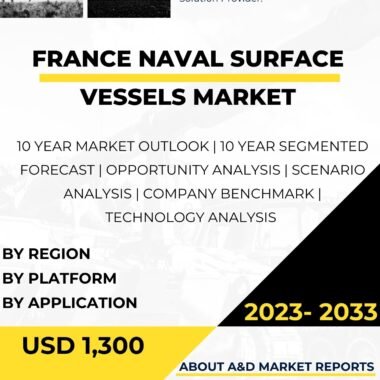Description
Canada’s naval surface vessels play a crucial role in safeguarding the country’s vast coastal regions, securing maritime trade routes, and projecting Canadian maritime power globally. As a maritime nation with significant coastlines and extensive maritime interests, Canada relies on a diverse fleet of naval surface vessels to protect its territorial waters, support defense missions, and contribute to international peacekeeping efforts. The adoption of modern and capable naval surface vessels strengthens the Canadian Navy’s operational capabilities and enhances the country’s maritime defense preparedness.
Naval surface vessels encompass a wide variety of ships designed for different roles and missions. These vessels include frigates, destroyers, corvettes, offshore patrol vessels, and mine countermeasure vessels. Each class of naval surface vessel serves specific purposes, ranging from anti-submarine and anti-ship warfare to maritime surveillance and humanitarian missions.
One of the primary types of naval surface vessels used in Canada’s defense sector is frigates. Frigates are versatile warships equipped with advanced sensor suites, weapon systems, and command and control capabilities. These vessels are designed to provide a balanced combination of anti-ship, anti-submarine, and air defense capabilities. Frigates are highly maneuverable and can operate in various sea conditions, making them essential assets for protecting Canadian waters and conducting operations in diverse environments.
Moreover, destroyers are larger and more heavily armed naval surface vessels that are optimized for anti-air and anti-missile warfare. Destroyers are equipped with advanced radar systems, missile defense systems, and long-range surface-to-air missiles, providing a significant contribution to air defense capabilities and safeguarding naval task forces.
In addition to frigates and destroyers, corvettes are smaller naval surface vessels designed for coastal defense, patrol duties, and surveillance missions. Corvettes are well-suited for littoral operations and countering asymmetric threats in confined waters.
Furthermore, offshore patrol vessels play a critical role in Canada’s maritime security and surveillance efforts. These vessels are designed for extended patrols, fisheries protection, and search and rescue operations in Canada’s exclusive economic zone (EEZ) and Arctic regions.
Mine countermeasure vessels are specialized naval surface vessels equipped with the necessary sensors and equipment to detect, locate, and neutralize naval mines. These vessels are vital for maintaining access to strategic chokepoints, securing maritime trade routes, and protecting naval task forces.
The Canadian defense industry actively participates in the development and modernization of naval surface vessels. Collaborations with domestic companies, academia, and international partners facilitate knowledge sharing and technology transfer, positioning Canada at the forefront of naval surface vessel innovation.
To ensure the security and reliability of naval surface vessels, rigorous testing and validation processes are employed during their development and construction. These procedures involve comprehensive assessments of the vessels’ performance, endurance, and resistance to environmental factors and operational stress.
Ethical considerations are addressed in the use of naval surface vessels, particularly concerning civilian safety and adherence to international laws and conventions. Efforts are made to minimize the impact on marine ecosystems and protect civilian populations during maritime operations.
The integration of advanced technologies is an ongoing trend in the Canadian naval surface vessel market. Modern naval surface vessels are equipped with state-of-the-art sensor suites, command and control systems, and weapon platforms, enhancing their situational awareness and combat capabilities.
Furthermore, research and development in naval architecture and shipbuilding contribute to the development of more efficient and multi-mission naval surface vessels.
Additionally, the Canadian defense industry explores the concept of next-generation naval surface vessels, which may include improvements in stealth technology, autonomous capabilities, and energy efficiency.
Naval surface vessels also contribute to Canada’s defense partnerships and international collaborations. The interoperability of these vessels with allied navies fosters cooperation and enhances collective maritime security efforts.
In conclusion, Canada’s naval surface vessels are integral to the country’s maritime defense capabilities, providing the necessary capabilities to safeguard Canadian waters, secure maritime trade routes, and support various defense and security missions. The diverse fleet of naval surface vessels includes frigates, destroyers, corvettes, offshore patrol vessels, and mine countermeasure vessels, each serving specific roles and missions. The Canadian defense industry’s commitment to research and development continues to advance naval surface vessel technology, positioning the country at the forefront of innovation. Rigorous testing and validation processes ensure the security and reliability of naval surface vessels. Ethical considerations prioritize civilian safety and adherence to international laws. The integration of advanced technologies, such as state-of-the-art sensor suites and multi-mission capabilities, further enhances the performance and effectiveness of naval surface vessels. Additionally, naval surface vessels foster cooperation and interoperability with allied nations, contributing to Canada’s international defense partnerships. As technology continues to evolve, naval surface vessels will remain critical assets in Canada’s naval arsenal, enabling the country to respond effectively to emerging security challenges and safeguard its maritime interests effectively.




